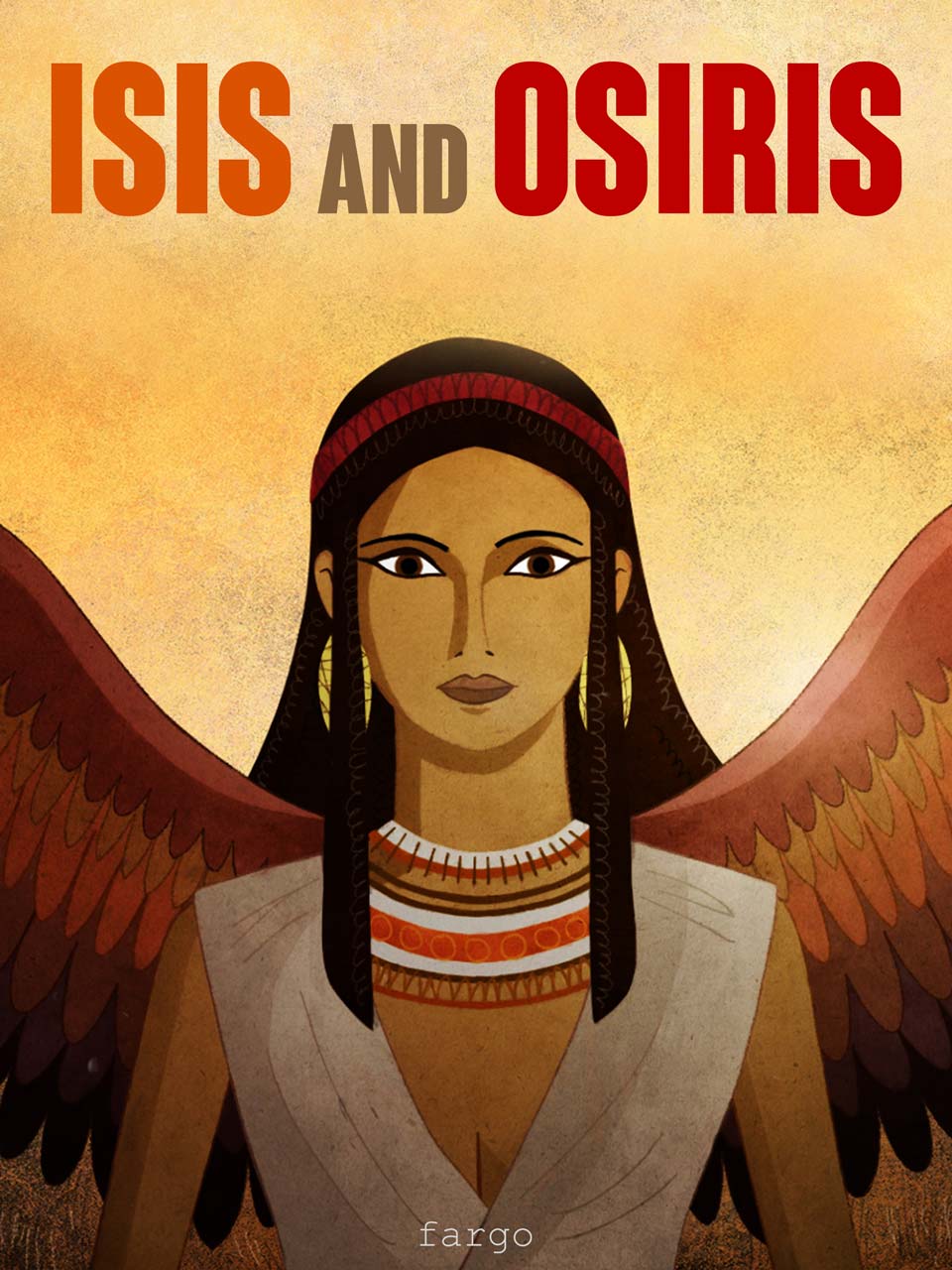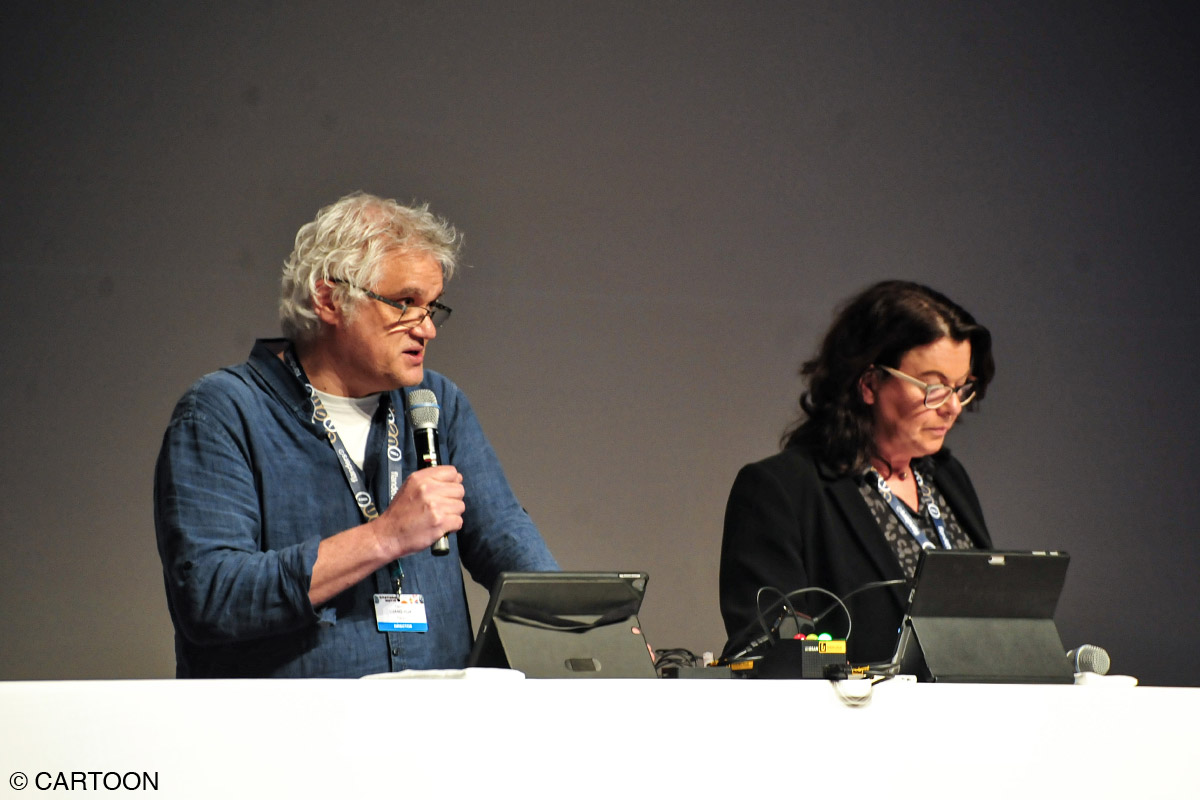Isis and Osiris
(Status: In Development)
Synopsis
In Egyptian mythological times, the god Osiris and the goddess Isis reign over the land. They fell in love at birth, sharing an eternal love. They are extremely benevolent to their people. Egypt is prosperous, with luxuriant, fertile natural surroundings and plentiful harvests. Seth, however, is a dry, jealous god, who reigns over the desert. During a feast organised in honour of Osiris, he slaughters him, hides his body in a chest and throws it into the Nile. A terrible drought descends upon Egypt and Seth seizes power. In despair, Isis sets out to find the chest and her husband. A long quest thus begins along the Nile river. A quest that will determine the fate of Egypt, during which love will conquer Death…
Isis and Osiris
Director: Fabrice Luang-Vija
Graphic Author: Anna Khmelevskaya
Producer: Sophie Fallot (Fargo, France)
Target audience: Family
Techniques: 2D digital
Format: 90’
Isis and Osiris is an animated feature film project that will tell one of the most famous tales among Egyptian mythology, a story on authority interwoven with intense love and hatred that is universal in human history.
The film project was pitched at Cartoon Movie 2023 and revealed its mysterious and solemn trailer that seems as if Egyptian wall paintings were brought to life and put into motion. It arouses in us the curiosity to dive into the ancient world.
We heard the story behind the film project from Fabrice Luang-Vija, the director, and Sophie Fallot, the producer.
Interview with Fabrice Luang-Vija and Sophie Fallot
Hideki Nagaishi (HN): What do you think are the key points of this animated feature film that would attract the audience?
Fabrice Luang-Vija: I would like to make a movie which attracts the audience by the world of mythological Egypt and famous gods for the first time in animation cinema. I hope that the story, graphic design, and poetry will be attractive for the family audience, and that the movie could honor, with its own style, Egyptian paintings.
Sophie Fallot: The strength of story, the theme of mythology, the graphics by Anna Khmelevskaya, and the pleasure we have in Fargo to tell strong stories to all ages.
HN: How did this feature film project start?
Sophie Fallot: After short animated movies such as He who has two souls (17 min) and The Snake Prince (30 min), inspired by the world of tales, Fabrice wanted to go further with a feature film project. Very quickly, the idea of Egypt mythology came to him, with the most famous tale of Isis and Osiris, which is one of the foundations of ancient Egyptian belief, and which incorporates many ingredients that Fabrice loves: the contrast between death and love, the magical universe, a strong narrative issue, and creative visual potential.
HN: What are you hoping that the audience will take away from this film?
Fabrice Luang-Vija: If the audience can understand Egyptian mythology emotionally thanks to this film, with a story that keeps it in suspense until the end, and moreover that they come out moved, with symbolic elements that resonate in our time today, I would be delighted. But there’s work to be done!
HN: Why have you chosen to make a film based on Egyptian mythology, and in particular, the story of Isis and Osiris?
Fabrice Luang-Vija: For many reasons. First, I love the world of tales for animation. Stories are strong and timeless. Secondly, I wanted an attractive subject for a feature film, with a theme and characters that are already more or less known. Thirdly, Egyptian mythology has never been adapted to animated cinema. Yet, it is a great material to propose a film that touches all ages. And I think 2D animation is the best support. And finally, the story of Isis and Osiris is ideal for a strong and emotional film, although its adaptation poses many pitfalls for a 90-min script.
HN: How are you developing the film’s story? For example, how are you taking care of the research, and how would you be augmenting that research to fit the film’s narrative?
Fabrice Luang-Vija: I first read many books on Egyptian mythology and the myth of Isis and Osiris. There are many versions, for children, curious, amateurs, specialists; I had to choose what to keep, discard, or invent in order to build a story that I wanted as an “ancient road-trip movie”, where we follow the point of view of the goddess Isis who goes on a long quest to find her beloved. Then I worked with Anna Khmelevskaya on the first graphic research, using many visual documents.
For the script writing, I collaborated with two Egyptologist consultants: Florence Quentin (France) and Arnaud Quertinmont (Belgium), who will also accompany us in the visual production of the film. It is very important for me that the movie, while having its own style, remains more or less in the realm of what is “legitimate” for amateurs and enthusiasts of Egypt.
HN: What is the most important characteristic and goal of the film’s visual design of the characters and the setting/backgrounds/environment?
Fabrice Luang-Vija: With Anna Khmelevskaya, the graphic author, we want to create timeless paintings that show an Egypt that can please all ages. Our goal is to propose images where we feel the drawing, the outline of the characters, the materials, and the textures that vibrate slightly, to pay tribute, in our way, to the Egyptian paintings. The visual rendering of the sets, but also of the characters, must evoke a deep, abundant, bewitching universe, with at the same time great simplicity in the direction, the framing, the cutting, and the axes of movement in cinematography.
HN: What can you tell us about the music for the film at the moment?
Fabrice Luang-Vija: Music will be very important, but not omnipresent. I want to preserve long passages of silence, contemplation, and realistic tension. At this stage, I imagine the music being quite intimate at times, with sounds of very old instruments, but also epic when necessary, with strings and percussions. Probably also vocal effects on some sequences, or a delicate singing voice. All this will take place from the animatic with the composer Nathanaël Bergèse, because the music is for me a character in its own right, which helps to build the narrative and the division of the film. The music must bring out the “extra emotion” and take the film to mysterious areas.









